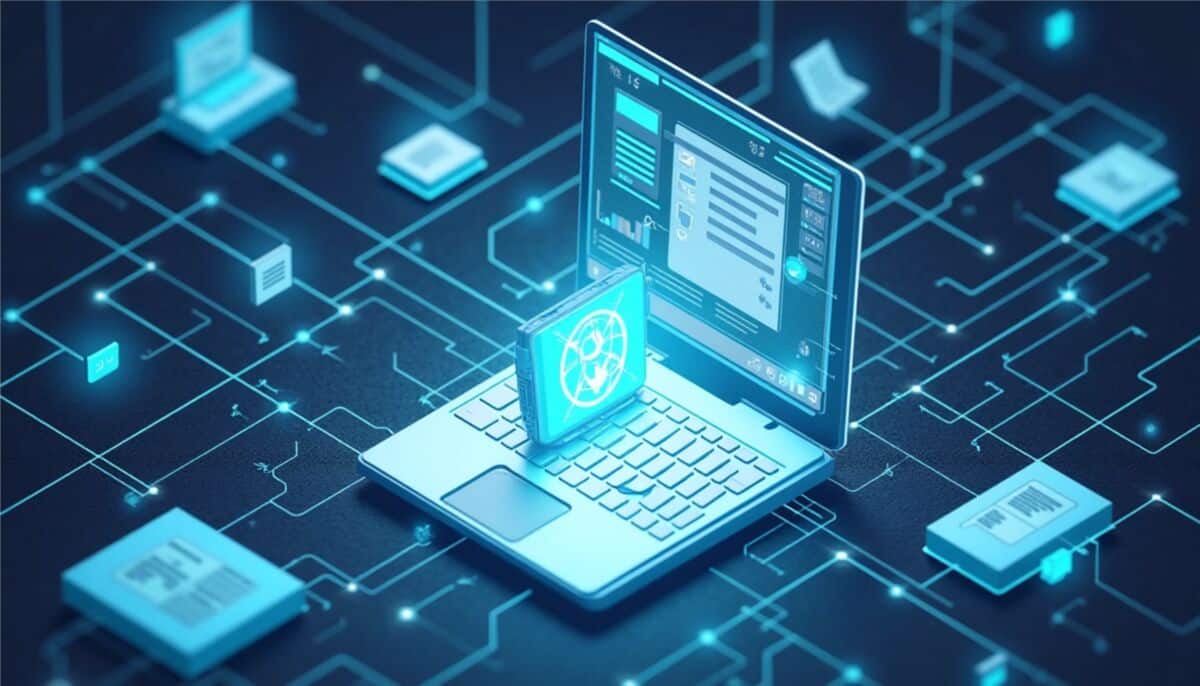Have you ever stared at a pile of invoices, contracts, or forms and wondered, “There has to be a better way”? It’s a question that’s echoed in offices around the globe. Today, we’re on the brink of truly smart document handling—no more laborious, manual data entry. Instead, a trio of technologies comes together—OCR, NLP, and deep learning—to turn chaos into order.
Getting Words Off the Page with OCR
Optical Character Recognition (OCR) is the workhorse that kicks things off. It isn’t a one-size-fits-all scanner; it’s a sophisticated process that analyzes the shapes of letters and converts them into digital text. Think of it as teaching a machine to read handwriting, printed text, even faded stamps.
It happens in two main stages. First, the system cleans up the image—shadows, creases, smudges all get ironed out in the preprocessing stage. Then, the system performs text detection and segmentation, which breaks the image into lines, words, and individual characters. Finally, pattern recognition algorithms match pixels to characters for the actual text recognition. The end result? Text you can search, index, and transform. And yes, it sometimes trips over messy handwriting or unusual fonts, but improvements in AI are bridging that gap every day.
On its own, OCR is helpful. But raw text isn’t all that useful if it’s just a jumble of words. That’s where our second hero enters: Natural Language Processing.
Navigating Meaning with NLP
Once you’ve got the characters, you need context. Natural Language Processing (NLP) teaches machines to understand, categorize, and even summarize that text.
Ever noticed how your email filters sort messages without you lifting a finger? That’s NLP at work. It tags phrases, detects sentiment, and can extract structured details like dates, names, or invoice totals. By recognizing patterns—such as recurring keywords or grammatical structures—it turns pages of text into bite-sized, meaningful data.
And here’s a common misconception: NLP doesn’t just hunt for keywords. It actually parses the relationships between words, so it can distinguish “May” the month from “may” the verb. That nuance feels subtle, but it’s crucial when you’re pulling out contract clauses or legal obligations. This is often achieved through a process called dependency parsing, which analyzes the grammatical relationships between all the words in a sentence.
Deep Learning: Power Under the Hood
You might ask: why add another layer? Deep learning brings neural networks—algorithms loosely inspired by the human brain—into the mix. These networks learn from examples, improving over time.
Imagine feeding thousands of medical forms into a system. A deep learning model begins to recognize complex layouts, varying templates, even scribbled doctor’s notes. Over time, it becomes remarkably adept at spotting anomalies: a missing signature, a mismatched date, or an out-of-place figure.
Here’s the catch: deep learning needs data. Big heaps of it. And it can be somewhat of a black box—sometimes you’ll get a result without fully understanding why the machine made that leap. But in practice, it’s become indispensable for handling messy, real-world documents.
A Simple Example
You scan a batch of expense reports.
- OCR converts them to text.
- NLP extracts line items and categorizes them (travel, meals, lodging).
- Deep learning flags unusual entries, like a hotel charge that’s ten times higher than average.
That chain of events can happen in seconds, not hours.
How It All Fits Together
Consider Intelligent Document Processing (IDP) the umbrella term. It’s where these technologies unite. IDP is a workflow automation technology that scans, reads, extracts, categorizes, and organizes meaningful information into accessible formats from large streams of data.
- Preprocessing
- Image cleanup, de-skewing, resolution adjustments
- OCR Stage
- Character recognition; text output
- NLP Layer
- Entity extraction; semantic analysis; sentiment tagging
- Deep Learning Oversight
- Exception detection; layout recognition; continuous learning
Does it feel like magic? Maybe, but it’s rooted in algorithms and training data. This pipeline can be customized, too. You might tweak the OCR engine for a particular font, or train the NLP component on domain-specific terminology.
And yes, perfection remains elusive. You’ll still need human review for edge cases—handwritten margins or wildly inconsistent formats. But on average, you cut processing time by 70–90%, and reduce errors dramatically. That’s more time for analysis, decision-making, or innovation.
Wrapping Up
We’ve come a long way from manual data entry. What once took days can now happen in moments. AI and machine learning have moved document processing from drudgery to data-driven agility. And though it isn’t flawless, the progress has been astonishing.
So, what’s next? Will IDP ever be entirely hands-free? Perhaps. But right now, the blend of OCR, NLP, and deep learning offers a compelling boost to any business drowning in paperwork.
Ready to transform how you handle documents? Drop a comment below and share your thoughts. Have you tried IDP in your workflow? Let us know what worked—or what didn’t. And don’t forget to follow Outreach Bee on Facebook, X (Twitter), or LinkedIn for more insights into emerging tech that can make your life a little less hectic.
Before you leave, learn how to choose the best OCR API for for your business.



The Intent Economy: How Behavioral Marketing Has Redefined Advertising Tactics
Unlock High-Converting Google Ads with Smarter AI Prompts